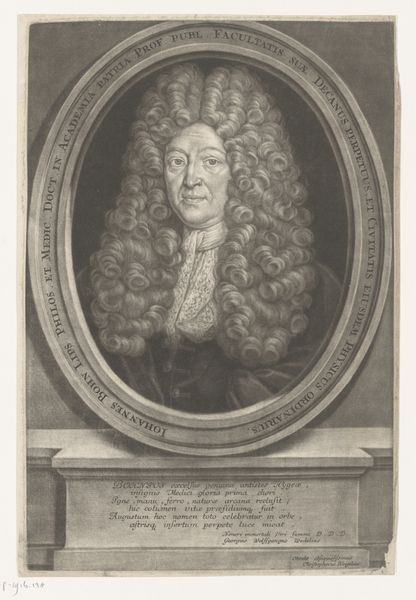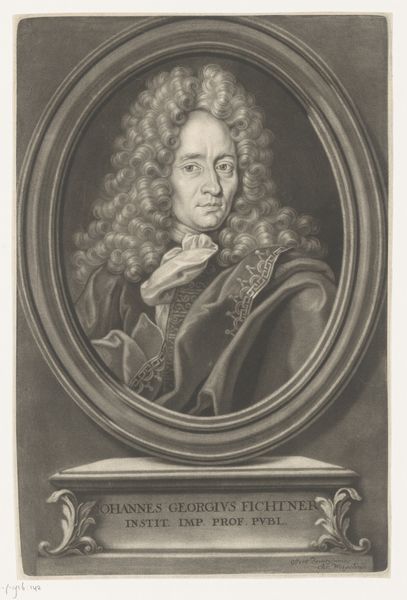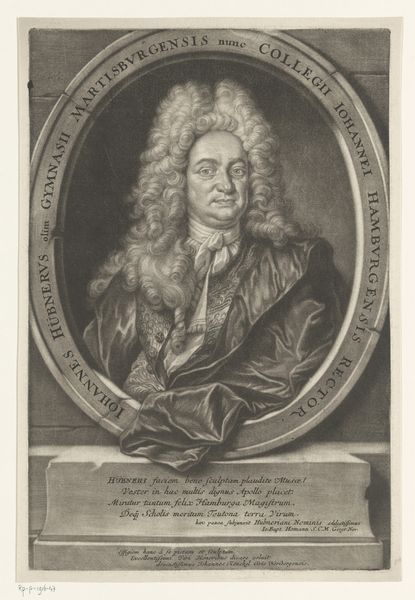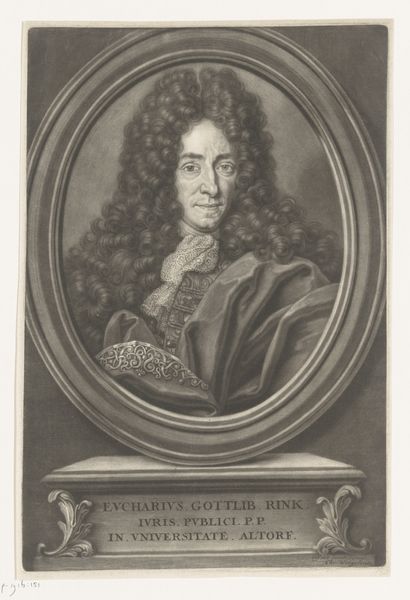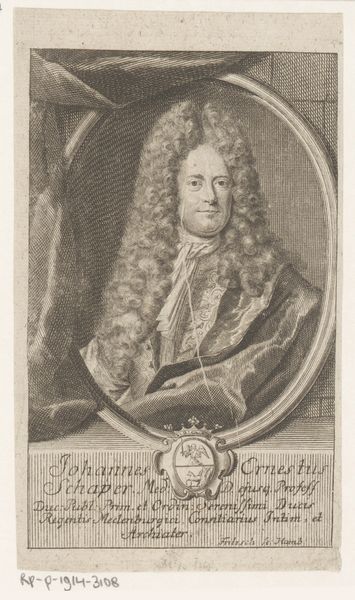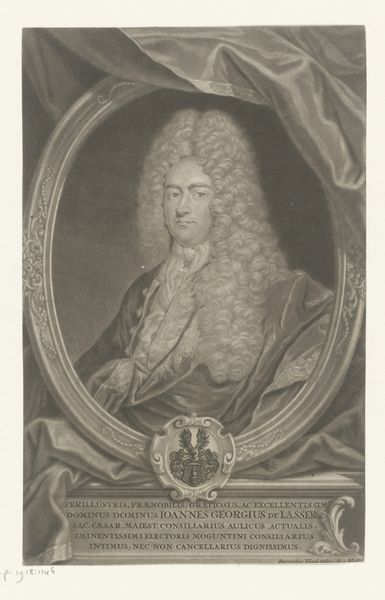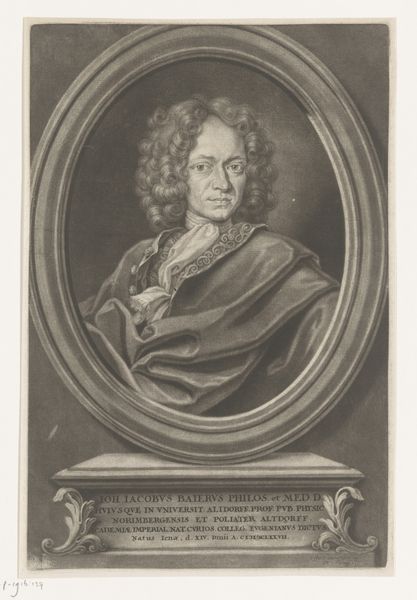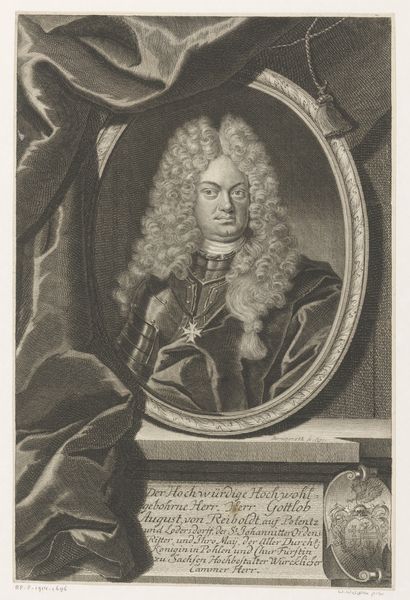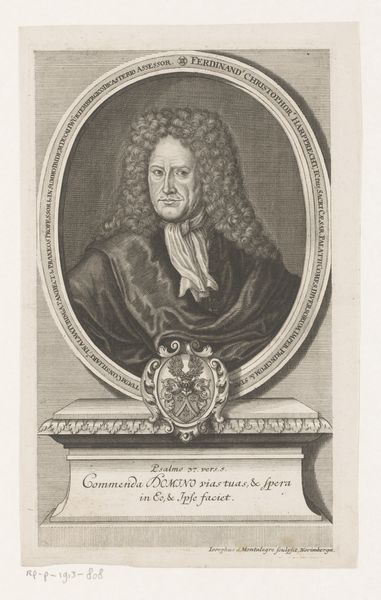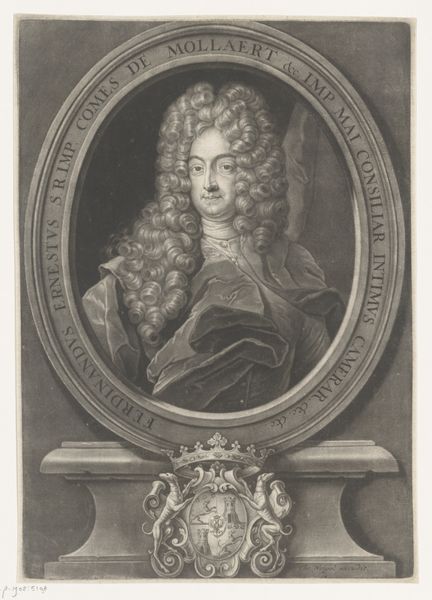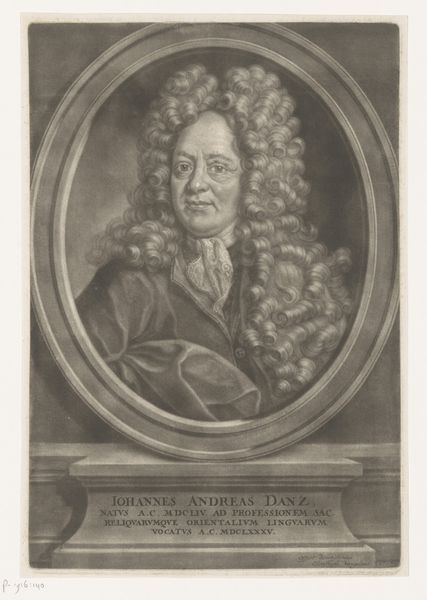
drawing, engraving
#
drawing
#
baroque
#
charcoal drawing
#
figuration
#
charcoal art
#
pencil drawing
#
line
#
portrait drawing
#
engraving
#
realism
Dimensions: height 309 mm, width 205 mm
Copyright: Rijks Museum: Open Domain
Curator: Before us, we have "Portret van Heinrich Hildebrand," an engraving dating back to 1710, currently housed at the Rijksmuseum. It's the work of Christoph Weigel. Editor: My immediate impression is the almost overwhelming detail – look at the textures, especially in the wig. It’s an explosion of curvilinear forms that dominates the composition. It's masterfully rendered with deep blacks and soft greys. Curator: Indeed, the dramatic chiaroscuro enhances the overall baroque sensibility. The print depicts Heinrich Hildebrand, a prominent legal figure and Rector of Altdorf University. Engravings like this were important for disseminating images of important people and promoting their status. Editor: Absolutely, and observe how Weigel utilizes line to construct both form and tone. Notice how the fine hatchings across Hildebrand's face create volume, lending a soft, almost lifelike quality. It directs your eye to his features—the weightiness of his stare is compelling. Curator: The portrait is a testament to the era's social structure. This image signals Hildebrand's influence and power through visual markers easily read by the public of the time: his elaborate wig, his formal robes, and the very fact of having a portrait made. Editor: I'm struck by the almost claustrophobic feel created by the oval frame. It tightly contains this riot of curls, further intensifying the focus on Hildebrand's expression. The design choice enhances the intimate scale of the image itself. Curator: These prints were rarely about intimate portrayal; they reinforced existing social hierarchies. Each carefully chosen detail projects an aura of authority around Hildebrand. He is presented to his world through carefully crafted visual propaganda. Editor: So true. Despite the intention, the artistry inherent in this method has preserved much that can be appreciated. I'm always moved by the ability to generate luminosity out of darkness, an achievement found readily across period engraving, and is particularly present in Weigel’s presentation of Hildebrand. Curator: And thanks to artists such as Weigel, this glimpse into the past reveals so much more than meets the eye—power, class, and influence through carefully calibrated visual cues, a lasting mirror to early eighteenth-century society. Editor: It shows that an exploration of artistry is possible even through the rigid constructs of cultural portrayal; despite the propaganda, some artists are genuinely concerned with the subtleties of art as visual and material form.
Comments
No comments
Be the first to comment and join the conversation on the ultimate creative platform.
